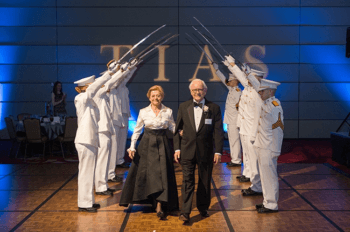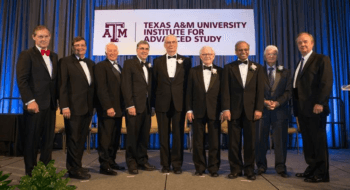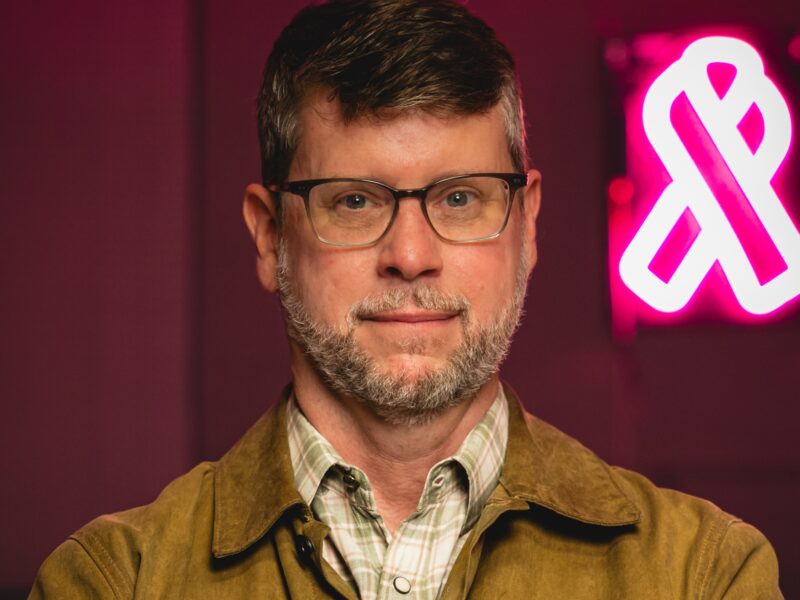Texas A&M Institute For Advanced Study — Transformative And Expanding

Transformative — that’s how the Texas A&M University Institute for Advanced Study (TIAS) is being described, and has underscored its expanding presence on campus by welcoming its newest class of faculty fellows, the designation for the nationally and internationally renowned scholars who are attracted to join the Texas A&M faculty for extended stays.
Also, the institute and the Chancellor’s Research Initiative, which provided major funding for its start-up, were cited for serving as models for the University Research Initiative proposed by Gov. Greg Abbott to help all public universities in Texas attract top faculty for similar service—thus also potentially have a key role in transforming higher education in the Lone Star State.
In helping welcome the new faculty fellows, Texas A&M System Chancellor John Sharp cited the “resounding success” of the institute during its first three years of operation.
”I know I speak for the Board of Regents in saying that the money the System invested in TIAS and the Chancellor’s Research Initiative, with the two working together, is some of the best money we ever invested anywhere.”
Through the Chancellor’s Research Initiative, Sharp provided $5.2 million to assist the institute in its start-up operations.
Interim Texas A&M President Mark Hussey joined in formally welcoming the new faculty fellows.
“We are honored to have you on the campus, and I know that you, our faculty and students will find these upcoming months a rewarding experience,” he told the honorees, adding “the Texas A&M Institute for Advanced Study is an important part of our desire to attract the very best scholars to our campus and for us to be recognized as one of the nation’s very best AAU (Association of American Universities) and land-grant universities.”
He noted the goal is for the institute to eventually attract 20 new faculty fellows to Texas A&M each year.
Prof. John Junkins, founding director of the institute, formally introduced five of the seven 2014-15 TIAS Faculty Fellows and one from the 2013-14 class who was not able to attend the comparable ceremonies last year. The two new faculty fellows who were unable to attend the Friday night ceremonies will be formally inducted at a later date.
“Academic Heisman Trophies,” to use Junkins’ characterization of the 10-pound bronze replicas of sculptor Auguste Rodin’s famous statue, “The Thinker,” were presented to the honorees.
“’The Thinker’ is widely viewed as a symbol of one who thinks deeply and passionately,” Junkins noted. “Clearly, deep thinking is something all our honorees have in common.
Junkins said the three-year-old institute began with planning and preparation that goes back a decade and is based on ideas and goals that were embraced in the university’s guiding study and resulting document titled “Vision 2020: Creating a Culture of Excellence.”
“Given the decade it took to establish this institute, and the excellent momentum we have established in the first three years — we are living in a very important era in the life of this university,” he declared. “We must take advantage of this golden opportunity to advance the excellence and reputation of Texas A&M University.”
He echoed Chancellor Sharp‘s assessment of TIAS and the Chancellor’s Research Initiative, saying the combination is the “biggest 1-2 punch for academic excellence in the history of Texas A&M.”
“Transformative, a term now closely associated with TIAS, refers to fundamental change,” Junkins said. “One only need look at the Chemical Engineering Dept. Dr. Chris Floudas initially came to Texas A&M from Princeton as a faculty fellow of our institute. He now is a permanent faculty member and the head of Texas A&M’s Energy Institute. He has already hired an additional national academy scholar to join him in his work. TIAS also brought to chemical engineering this year the National Medal of Innovation & Technology awardee, Dr. Rakesh Agrawal, from Purdue. Chemical engineering is just one of the areas where TIAS is making a transformative impact.”
Prof. Emeritus Robert Skelton of the University of California at San Diego, renowned for his years of involvement with control of the Hubble telescope and SKYLAB, America’s first space station, spoke on behalf of the new inductees.
“Looking at this institute from a national perspective, it is obvious that its establishment is a historic event, and any university would be proud to have such an institute,” he said, adding that he and the other faculty fellows “appreciate the responsibility that our selection places on us.
“We embrace your expectations and we are excited to collaborate with our senior colleagues, rising star young faculty, and to help mentor outstanding students. We will especially emphasize the development of young people during our appointments.”
Skelton will be working with faculty and students in both the Dwight Look College of Engineering and the College of Architecture.

Junkins pointed out that the first three classes of faculty fellows include a Nobel prize winner in economics, a Nobel Prize winner in physics, a winner of the Wolf Prize – who was awarded this prize while a member of the second class of faculty fellows–a recipient of the National Medal of Science, a recipient of the National Medal of Technology and Innovation, and an awardee of the Hubbell Medal in Literature for Lifetime Achievement – the youngest person to ever receive that award.
The growing body of Faculty Fellows has come to be informally tagged the “genius corps” in recognition of the selectees’ records of accomplishment in their various fields and equating their potential academic impact on the university to that of its legendary Corps of Cadets in another dimension.
The seven 2014-2015 faculty fellows and the 2013-24 honoree who was inducted Friday are:
- Mr. Harold Adams, architecture. He is Chairman Emeritus of RTKL International, having built a small company into a large innovative company with 14 locations around the world, and he is a designer of many prestigious projects. He is a member of the National Academy of Construction and the Royal Institute of British Architects and is the 2014 recipient of the Leslie N. Boney Award, the highest honor awarded by the College of Fellows of the American Institute of Architects. Mr. Adams was one of the first Americans to be awarded a “first class Kenchikushi” license in Japan. He has served as the KAE Professor in the University of Maryland School of Architecture (2005) and early in his career was project director for President John F. Kennedy’s grave site.
- Dr. Rakesh Agrawal, chemical engineering. Dr. Agrawal is the Winthrop E. Stone Professor of Chemical Engineering at Purdue University and is a recipient of the National Medal of Technology and Innovation, the U.S. government’s highest honor in those fields. He is a member of the National Academy of Engineering and has conducted extensive research regarding solar energy production issues, including how to fabricate low-cost solar cells based on nanotechnology. Considered a master inventor, more than 100 manufacturing plants with investments of billions of dollars incorporate his inventions, repositioning parts of the U.S. manufacturing sector for world-wide competitiveness.
- Dr. Jack Dongarra, computer science. Dr. Dongarra is Distinguished Professor of Computer Science at the University of Tennessee and holds the honor of being a member of the Distinguished Research Staff at the Oak Ridge National Laboratory. He is a member of the National Academy of Engineering and has produced numerous software packages that have made a monumental impact on high-performance computing, as all scientific codes of any importance use products of his team.
- Dr. William S. Marras, systems engineering. Dr. Marras hold the Honda Endowed Chair and Professor of Integrated Systems Engineering at Ohio State University. Additionally he is Professor, Physical Medicine and Rehab, Professor, Orthopedics, and Professor of Neurological Surgery at Ohio State University. Dr. Marras is the Director and Scientific Director of the Spine Research Institute. He is a member of the National Academy of Engineering and a Fellow of the American Association for the Advancement of Science. He specializes in studies concerning spine disorder causation and prevention, evaluations, and treatment.
- Dr. Ed Moses, Principal Associate Director, National Ignition Facility Program & Photon Science, Lawrence Livermore National Laboratory. He is a member of the National Academy of Engineering. Dr. Moses has received the Award of Excellence by the National Nuclear Security Administration, the Award of Excellence for the first experiments by the Lawrence Livermore Laboratory in conjunction with Los Alamos National Laboratory, and he is the recipient of the D. S. Rothdestvensky Medal for Outstanding Contributions to Lasers and Optical Sciences awarded by the Russian Optical Society. Dr. Moses is best known for developing and managing complex laser systems and high technology projects. For years he has directed the nation’s fusion energy research, and his expertise in high power laser physics applications is without peer. He is now the new director of the Magellan Telescope Project.
- Dr. Yuri Oganessian, nuclear engineering. Dr. Oganessian is Professor, Scientific Director, Joint Institute for Nuclear Research – Dubna, Flerov Laboratory of Nuclear Reactions in Russia. He has twice been named winner of the State Prize, the highest national award by the President of Russia. He has won other prestigious international competitions and is regarded as the world leader in the search for and discovery of new elements. He has discovered the heaviest elements with atomic numbers, and he has discovered nuclear reactions leading to synthesis of elements.
- Dr. Robert Skelton, mechanical and aerospace engineering. Dr. Skelton is the Daniel L. Alspach Professor of Dynamic Systems and Controls and is Professor Emeritus of Mechanical and Aerospace Engineering at the University of California, San Diego. A member of the National Academy of Engineering, he is world renowned for his work in control systems, systems engineering design optimization, structural dynamics and design, and tensegrity structures and multi-scale Tensegrity in materials, and deployable structures. He has for many years been involved with the control of Skylab and the Hubble Telescope.
- Dr. Peter J. Stang (2013-14), Distinguished Professor of Chemistry at the University of Utah, won the National Medal of Science award in 2011 for his groundbreaking work in organic chemistry. Dr. Stang and his team work with chemical systems built from molecular components. In essence, Stang and his team are molecular architects who rearrange the building blocks of chemistry to create new and better products to serve advanced medicine, information storage, and energy. Dr. Stang is a member of the American Academy of Arts & Science, the National Academy of Sciences, the Chinese Academy of Sciences, and the Hungarian Academy of Sciences. He was won numerous prestigious awards and has for the last 12 years been editor of world’s top chemistry journal, the Journal of the American Chemical Society.
The Institute’s Faculty Fellows are annually selected through a process led by an electorate of acclaimed current faculty at Texas A&M, consisting of Nobel Laureates, Wolf Prize recipients, National Academies members and distinguished professors, among others.
Media contact: tamunews@tamu.edu.





